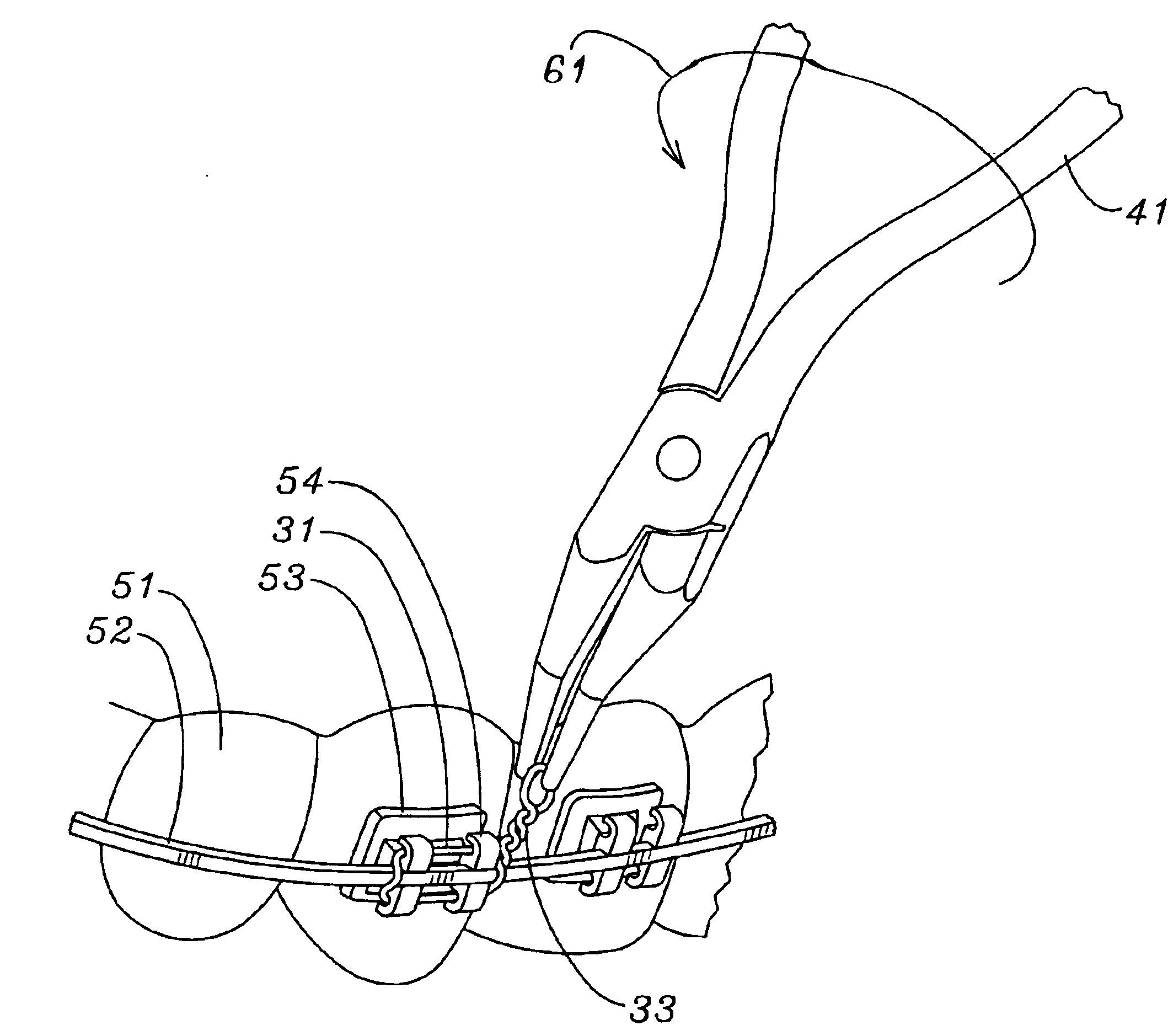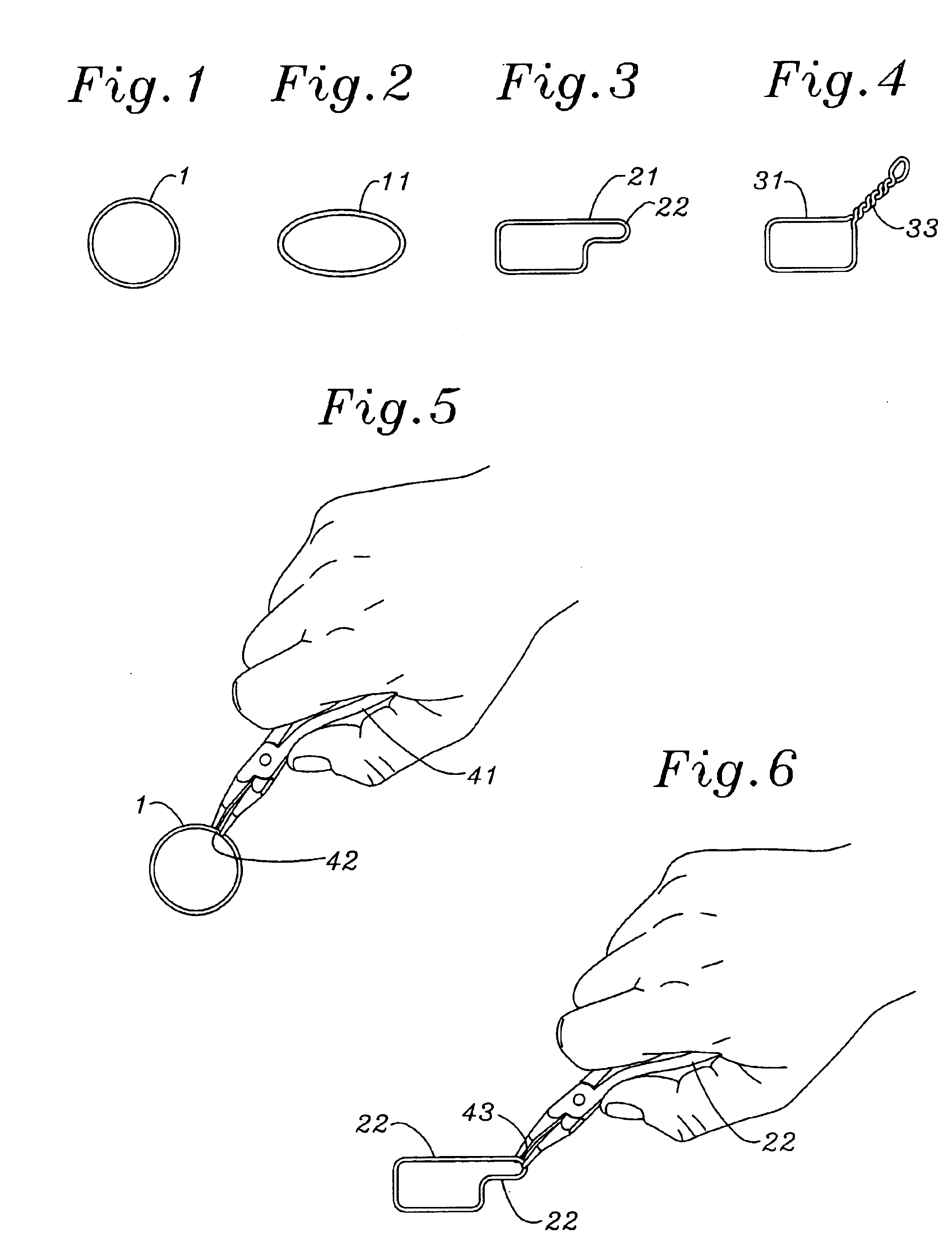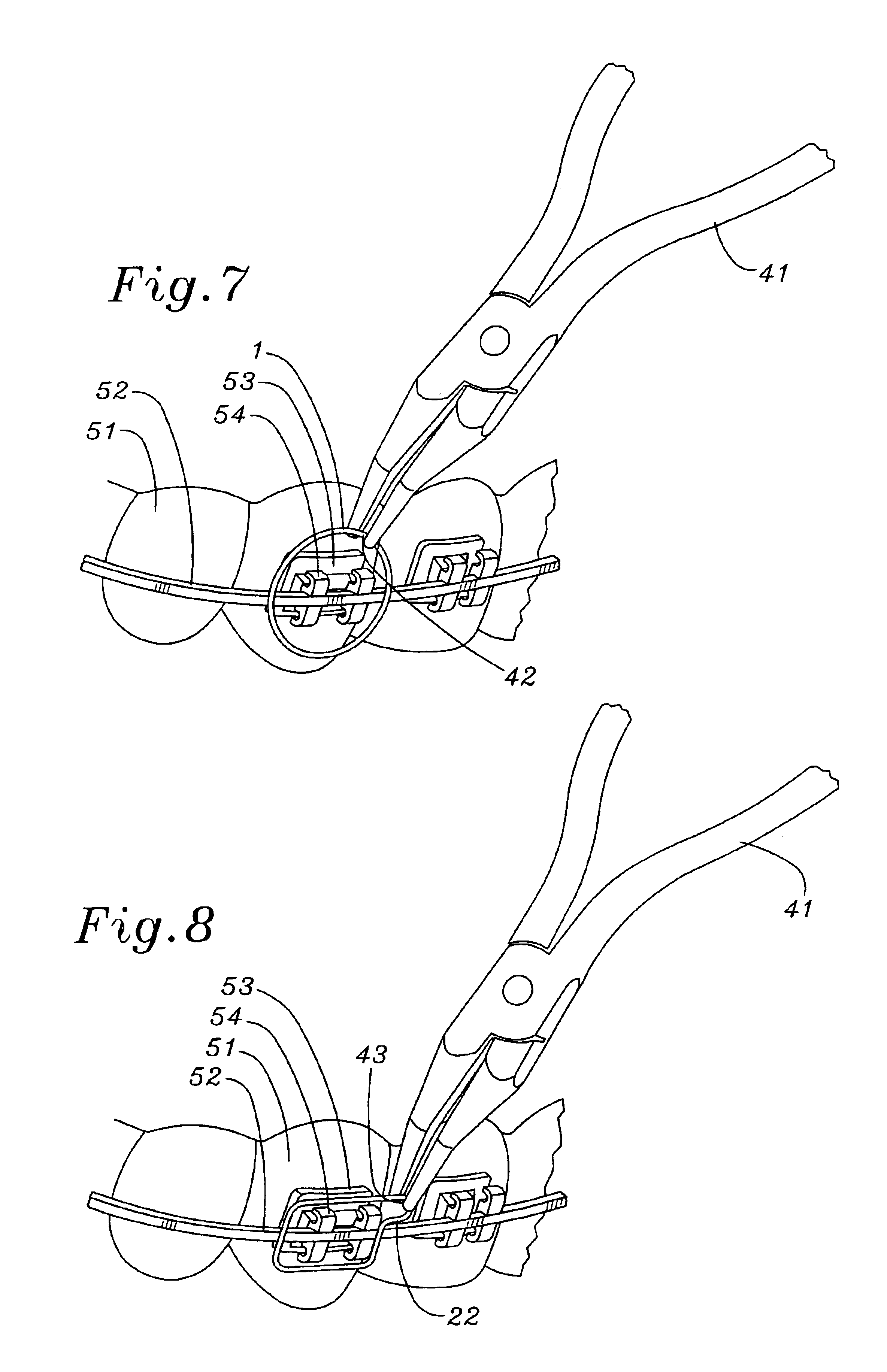Twist on orthodontic hook
a hook and hook technology, applied in the field of orthodontic assembly, can solve the problems of difficult to ensure the cleanliness of the arch wire, the difficulty of the hook to be attached to the arch at locations, and the movement of soldered or electro-welded arch wire hooks in the mouth
- Summary
- Abstract
- Description
- Claims
- Application Information
AI Technical Summary
Benefits of technology
Problems solved by technology
Method used
Image
Examples
Embodiment Construction
[0026]Referring to FIGS. 1-3, the orthodontic hook 1 is constructed for installation on a conventional orthodontic assembly of an arch wire 52 attached to brackets 53 which are attached to the front faces of teeth 51, as shown FIGS. 7-10. Each tooth bracket 53 includes a base 55 bonded to the outer surface of a tooth 51. A body projects outwards from the bracket base 55 and carries a plurality of wings 54 projecting upwards and downwards from the opposite side of a groove or slot 56 between them in which the arch wire 52 is fitted. Normally the arch wire 52 is tied to each bracket 53 by an elastomeric ring or a fine wire as shown in FIGS. 7, 8, and 10. In FIGS. 7, 9, and 10 the orthodontic hook 1 is tied to the bracket tie wings 54 either under the arch wire 52 or over the arch wire 52, securing the arch wire 52. The orthodontic hook 1 is installed on the bracket assembly virtually any location around the dental arch.
[0027]The orthodontic hook 1 may be made from various types of all...
PUM
 Login to View More
Login to View More Abstract
Description
Claims
Application Information
 Login to View More
Login to View More - R&D
- Intellectual Property
- Life Sciences
- Materials
- Tech Scout
- Unparalleled Data Quality
- Higher Quality Content
- 60% Fewer Hallucinations
Browse by: Latest US Patents, China's latest patents, Technical Efficacy Thesaurus, Application Domain, Technology Topic, Popular Technical Reports.
© 2025 PatSnap. All rights reserved.Legal|Privacy policy|Modern Slavery Act Transparency Statement|Sitemap|About US| Contact US: help@patsnap.com



